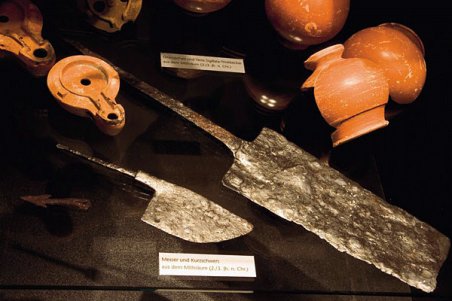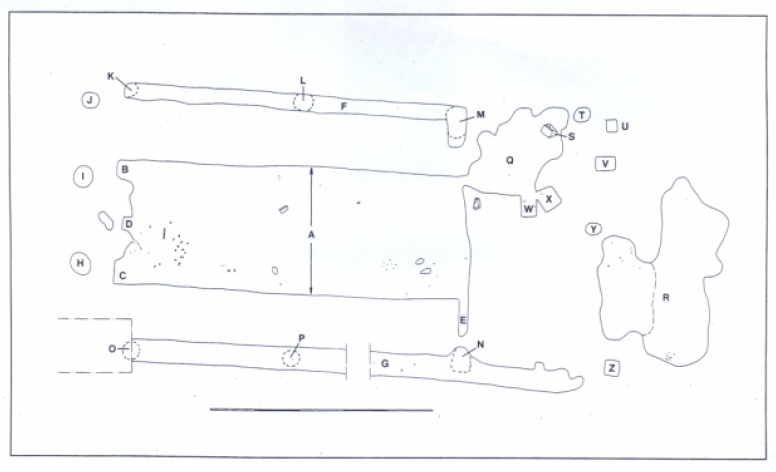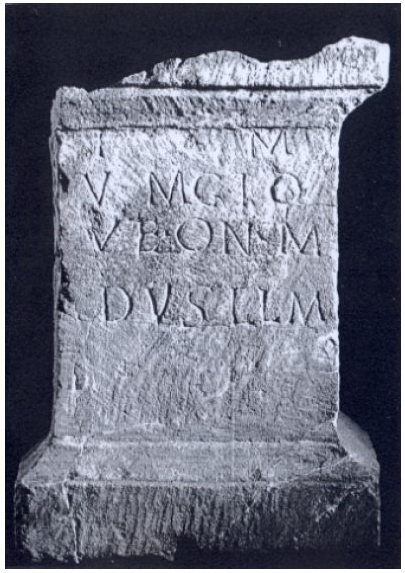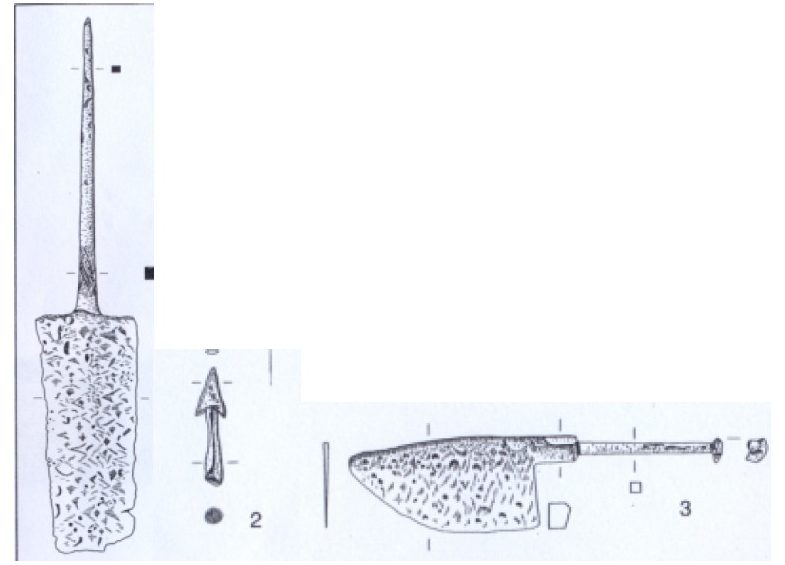
CIMRM Supplement - Mithraeum. Künzing, Germany.

A Mithraeum was discovered in 1998 at the Roman fort of Quintana in Kuenzing in Bavaria.1
Near the eastern vicus is an area of around 4.3 hectares with no finds, between the outer fort ditch and the vicus. This was perhaps a marketplace. In 1998 the floor plan of a sanctuary was established, located 190m east of the outer defensive ditch of the cohort fort, next to the civil settlement. 30m away from it is a cremation burial cemetery. 5m to the east were two pits, in which were found the bones of sheep and goats, chickens, young pigs, together with excess mortar, granite and pottery.
The Mithraeum is a sunken temple building, oriented east-west. The entrance was probably on the east. A considerable amount of stone was found, of granite, limestone and tufa, the two largest pieces being west of the centre aisle where an altar would have been. Post-holes for roof supports were also found.
Two phases of construction were found. The first phase was a simple timber and post building with a saddle roof, 8.9m long, including the exedra, and 6.0-6.2m wide. The podiums were 1-6-1.7m wide. A small rectangular exedra was at the end of the aisle, where it was sunk into the ground. The building had a covered hallway, and could take around 17 people.
The first mithraeum was destroyed by fire. It was rebuilt rather larger, now 10m long and the central aisle widened. The new construction used beams, but was still timber-frame. Some painted plaster has been recovered, suggesting that a cult image existed in the exedra.
The finds included an altar 45 cm high and another 55 cm with inscription:
I(nvicto) M(ithrae)/V(alerius) Magio/vet(eranus) (h)on(esta) m(issione)/d(imissus) v (otum) s(olvit) l(ibens) l(aetus) m(erito).
The finds include also a piece of a sword, a complete sword, a knife and an arrowhead. 4 kraters decorated with snakes were found in the sanctuary area. The mass of the pottery is terra sigillata, mostly cups.
The pottery dates the second mithraeum to the first half of the 3rd c. AD.
Gordon comments that the plan of the site is mainly conjectural, based on the evidence of the post holes; that the site is in ancient Rhaetia, and is important because of the 34 kg of ancient animal bones, originally just outside the site but washed in, which indicates that the animals, mainly chicken, were killed and cooked on site.2
Coordinates: 48° 40' 11" N, 13° 04' 49" E / 48.66872° N, 13.08028°3
External links.
- K. Schmotz, "Der Mithrastempel von Künzing, Lkr. Deggendorf. Ein Vorbericht." In: Vorträge des 18. Niederbayrischen Archäologentages. Rahden/Westf., 2000, p.111-143.
- Museum Quintana. Archaeologie in Kuenzing: Fuehrer durch alle Abteilungen, 2004. 89p.
- Karin Fegerl, Archäozoologische Untersuchungen eines Fundkomplexes aus dem Tempelbezirk des Jupiter Heliopolitanus von Carnuntum, Diss. 2008. Vienna. Online here.
- Arachne photograph here.


